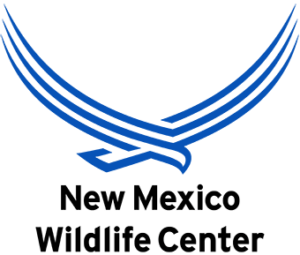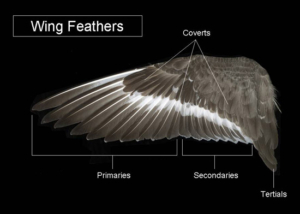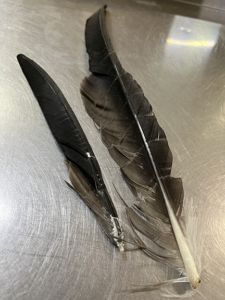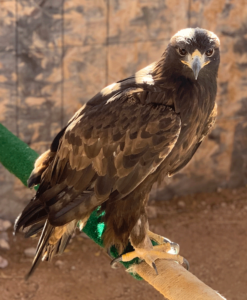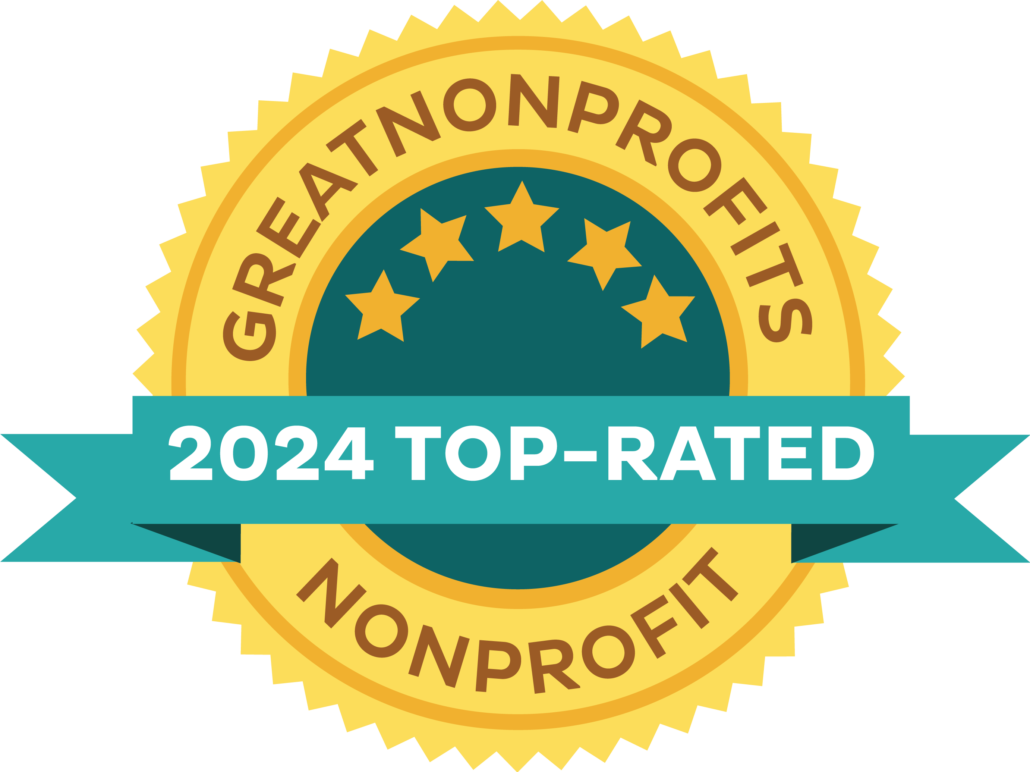A Year in the Life of a Golden Eagle
For some patients that come to our wildlife hospital, the recovery process can be long and unpredictable. Such was the case of Golden Eagle 21-734.
Near the end of August 2021, a Golden Eagle was found in Grants, New Mexico on the side of a road near I-40. Rescuers presumed she had been hit by a car and contacted Hawks Aloft, a raptor rescue in Albuquerque. Their initial exam showed that the bird’s left phalanx (equivalent to a human finger) was fractured, making it impossible for the bird to fly. (See x-ray.)
Once stabilized, the eagle was transferred to NMWC where the fracture healed. However, feathers grow out of the bone, and since that area of the bone was weakened by the fracture, the primary feathers (which are necessary for flight) near the injury site showed signs of physiological stress, were weaker, and of poor condition. As seen in the lower picture, the “stress bars” – horizontal lines that go against the grain of the feather – were extreme. In some places, the feather was being torn apart at these stress points, and several of the affected primaries eventually broke off close to the body. With significant stress bars, feathers are more susceptible to breakage causing inferior flight.
After several months of waiting for the poor-quality feathers to molt out, hospital staff elected to stimulate new growth by sedating the eagle and plucking three affected primary feathers. The next set of feathers grown from the site continued to show signs of stress, and we feared that the bird would not be releasable. Given that it was now the time of year when golden eagles normally molt, we decided to give her a chance to replace feathers through that natural process. It took an additional four months, but fortunately, the newly grown feathers were in much better condition!
Following adequate time in a large flight enclosure where she could regain strength and endurance, and spending a couple of weeks in “prey school” (where the bird proves it can hunt live prey for its meals), the eagle was cleared for release back to the wild. Over 370 days after she was rescued, this magnificent raptor was released near her original location in Grants.
Obviously, primary feathers are crucial for a bird’s survival; they make flight possible by providing thrust, and they even play a part in supporting lift. When we think of NMWC’s primary feathers, we think of donors like you. Your enduring and strong support provides the thrust and lift we need to move forward on our mission to connect people and wildlife. Thank you for making it possible for us to fly!
Question / Answer
Why release animals near their original rescue location?
We take many factors into account when considering a release location for our patients. The patient’s species and age, as well as state and federal regulations influence our choice of release site. In many cases, adult animals will have already established territories, and in some species, they may have a mate waiting for them back home. Animals that have survived to adulthood prior to sustaining an injury have proven that they have been successful living in that area. In other cases, the species may have a small home range or a very specific type of habitat that they need, so its best chance for continued survival is to return it to where it was found. State and federal regulations, generally informed by these natural history considerations, also dictate in many cases where we can release an animal relative to where it was originally rescued.
